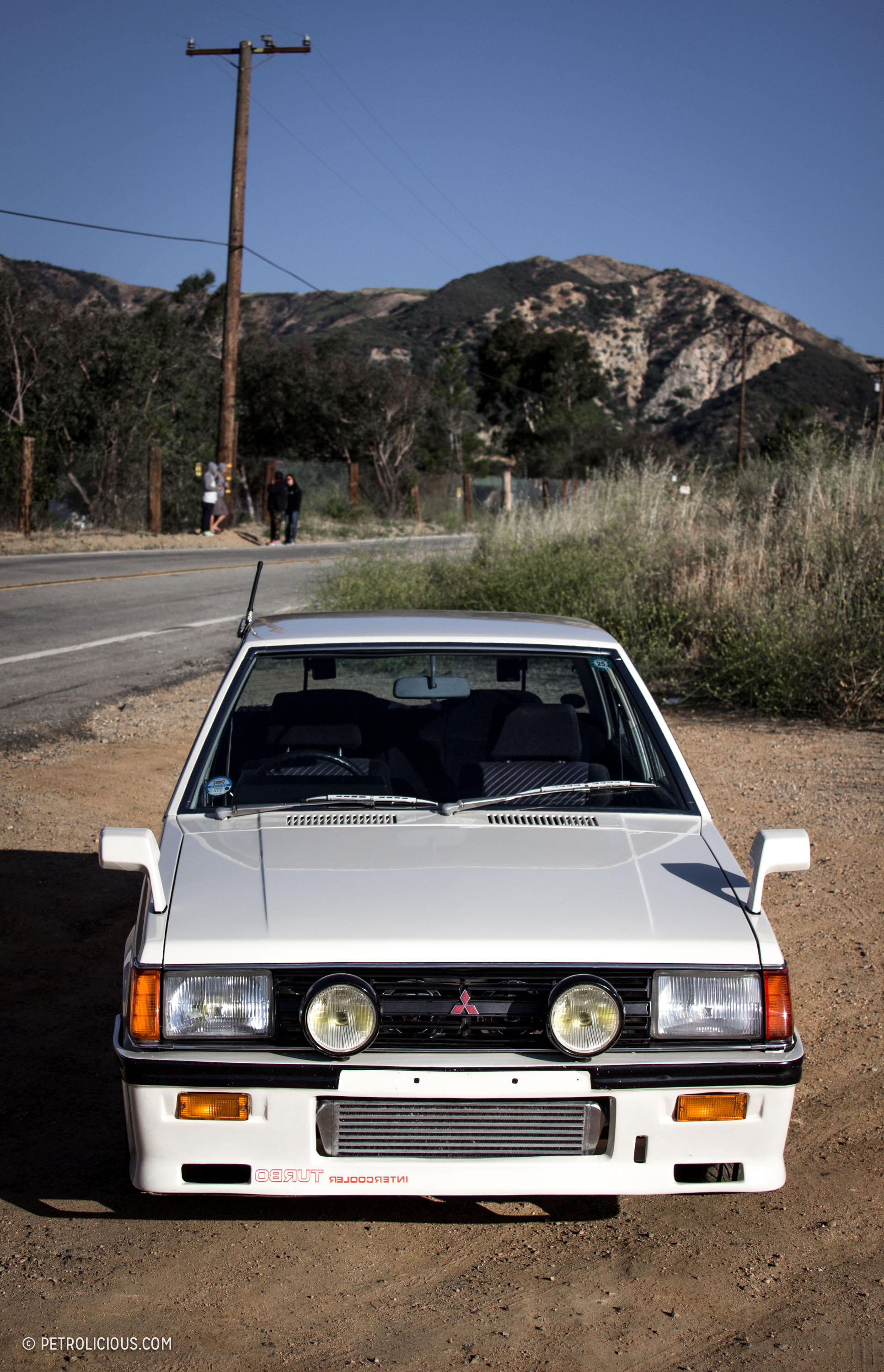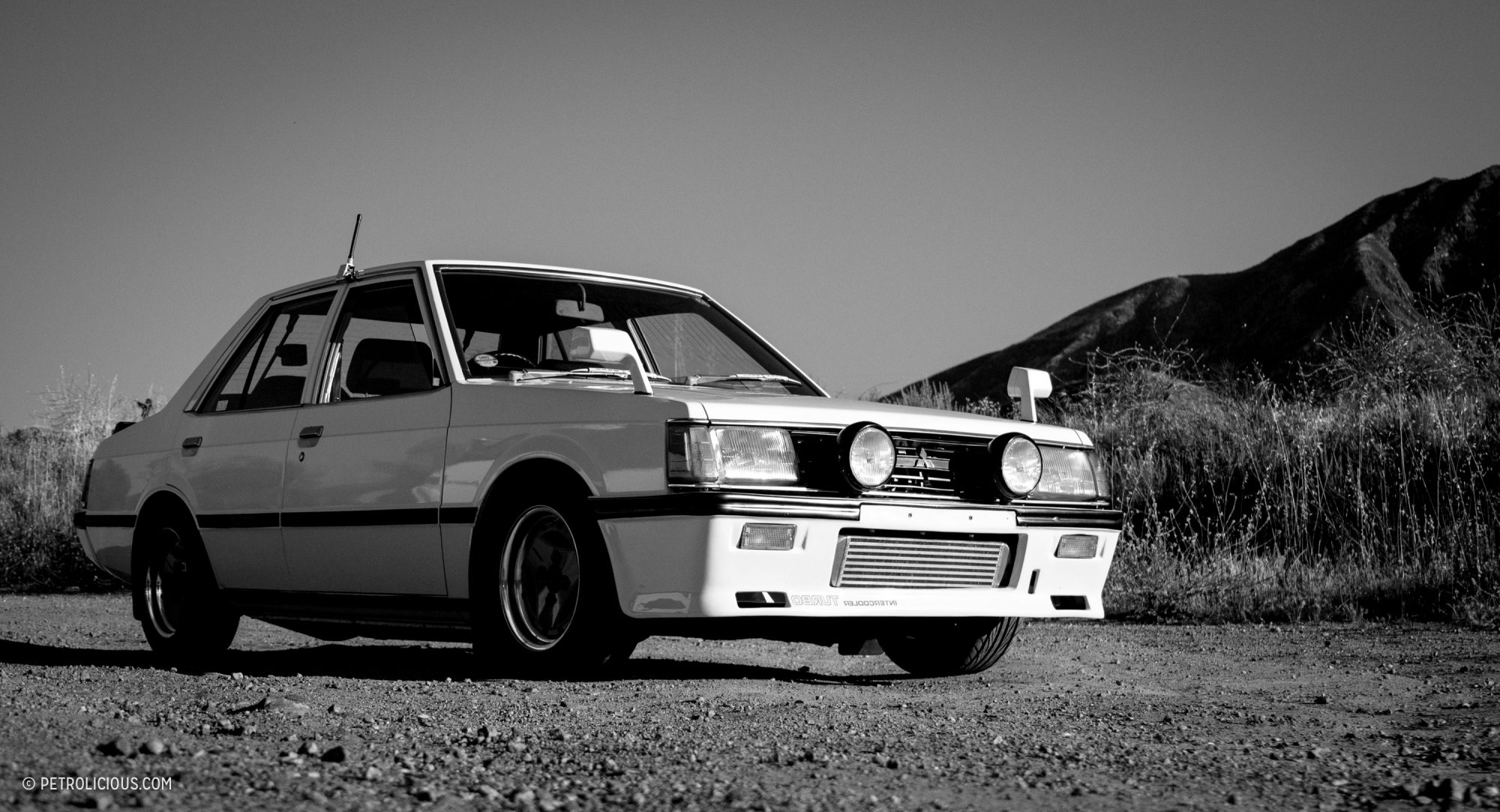

Period-Correct Mitsubishi Lancer ‘Box-Type’ Embraces Vintage Japanese Style
Photography by Alex Sobran
It is a common and across-brand convention to give colloquial nicknames to certain generations of an automotive model line—strings of impersonal code-like characters may reveal engine displacement or horsepower figures, but they are severely lacking in descriptive ability beyond the cold facts—but few sum up a car’s essence more completely or succinctly than the “box-type” moniker that fans have assigned to Mitsubishi’s second iteration of the Lancer sedan. It is one big box made up of smaller boxes almost everywhere you look. It is the automotive example of fractals.



And yet, the simple and slab-like styling of this car is pretty intricate despite its seemingly simple makeup. “Versatile” is a poor way to describe any vehicle’s styling, and even more so when the it’s comprised of some pretty basic shapes, but what I mean by calling this car versatile is that one can think of this Lancer as either looking extremely dated, or endearingly retro; it depends on perspective, but more than that, it comes from how well the thing’s been taken care of. Tired paint, ill-fitting plastics, and questionable modifications can turn ‘80s polygons like these into pretty sore sights.



Jay’s box-type Lancer is not that clapped-out beater behind the gas station though, his is a pristine capsule of that decade’s design done correctly. This Mitsubishi proudly embodies the era of its inception with a balanced mix of OEM and period-correct upgrades, showcasing the inherent potential in Mitsubishi’s practical little Lancer. Though its originally intended duties fall in line with those of other small, unencumbered economy cars, the box-type earned early fans due to its reliability, light weight, and importantly, the rear-wheel drive layout missing from future generations of the model line. And while you wouldn’t find an LSD or sporting suspension setup in these cars (this came before the first Evo was Frankensteined into being), but remember that this car is about potential.
In wild excess of the original gear it would have left the factory with, Jay’s Lancer’s engine bay has received a new tenant in the form of an Eclipse’s turbocharged 4G63. Now pushing power figures comfortably over the 200 mark, the little lightweight is sort of like a progenitor to the Evo models that would grace the Lancer lineup later on. Ok, yes, it is not a rally car by any means, but, like the Evo, it has a big bump in power thanks to a turbocharger, has had its suspension heavily tweaked to trade comfort for competence, and it wears an exterior that looks much more fight than flight.

Looking around the car from under the hood to the parcel shelf, everything Jay’s modified on his Lancer has been in the pursuit of period-correct perfection, and taking the time to track down the various NLA parts from the far reaches of the internet has paid off handsomely. The most noticeable of the aftermarket pieces is of course the striking red Advan A3A three-spoke wheels. While wearing shoes like these is a bold statement, Jay didn’t go overboard with the upsizing, nor did he fit rubber-band-like tires and lower the car to impractical height. As strange as it may seem, these red tri-spokes are actually a very mature upgrade, and if the Lancer were any other color but the milky off-white it’s been painted, the red would be an eyesore instead of the complement that it is on Jay’s car.




Going below the metal membrane, the same care has been given to the mechanical pieces. Refreshing the entire suspension, including all the linkages, bushings, and mounts, Jay chose to add some agility to the chassis by way of some Tokico coils, and the ride is markedly more planted and capable than what was originally fitted, but at the same time, it isn’t the kind of car that needs to be constantly weaving around every single imperfection in the road surface either. Getting back to the motor again, the swap required a great deal of custom fabrication and parts-matching in order to not only transmit power smoothly to the rear wheels (the motor was originally mounted transversely in the Eclipse it came from, and powered the front wheels instead of the rears like it does in the Lancer), but to also retain complete functionality of the auxiliaries like power steering and air-conditioning—it is more or less assumed that these features are sacrificed when moving between motors, but not on this car. Every sensor and hose and pump are still here; this is no hacked-together swap requiring a bunch of tricks to make the thing somewhat usable.
And speaking of the motor, keen eyes will notice the oddity of seeing “AMG” on the spark plug cover; that is indeed the AMG now synonymous with Mercedes-Benz. Though they only tuned the Galant VR4’s souped-up engine and not this one (the VR4 would more or less become the basis for the Evo), it is a very cool piece nonetheless, and represents another oddity from time period that this car hails from.


Jay’s box-type is a product of Japanese design and long days and nights spent building upon the car’s existing platform, but more than that it is a testament to the fact that even heavily-modified cars can still be tasteful. If you prefer the swept lines of the ‘60s the hard edges and unbroken rays that form the box-type Lancer may not do it for you, but even so, the work involved in carrying out this build demands respect. And if you are swayed by the defined angles and upright stature of this Lancer, Jay’s build will tick all the right boxes.















